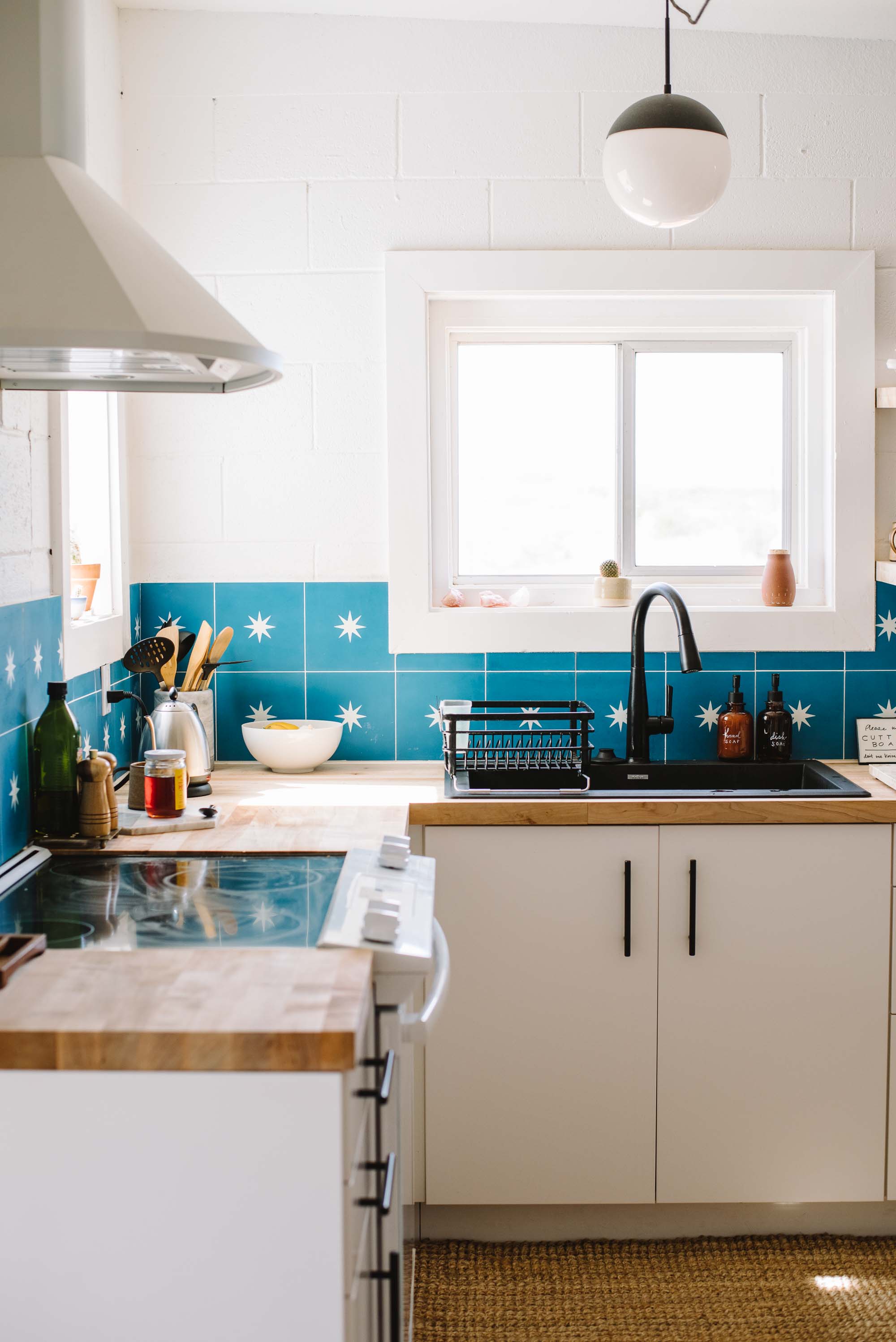
I was gifted a stay at the exquisite That Desert House. All opinions are my own.
We drove up to That Desert House at 6pm on a Tuesday, equipped with laptops, taco fixings, beer, and lime popsicles. My friend Chad—who I spent years doing wacky experimental theatre with in college—and I were there for a writing retreat, both of us intent on wrapping up overdue projects under the generative canopy of desert sky. I’d been eagerly awaiting this visit for months, as I Insta-stalked prolific artist Lindsay Hollinger’s progress renovating her second iconic Joshua Tree Airbnb (the first is Casa Joshua Tree).
As the car hummed to a stop, my mind exhaled into the endless expanse of space, sky, and desert that stretched in all directions. Then came the scent. Before you even open the doors of That Desert House, a scent of calming clarity seeps through the walls. Notes of palo santo and juniper, pine and earth. An aromatic welcome I dropped right into, almost as easily as I relaxed into the California elegance of each of the home’s exquisitely appointed rooms.
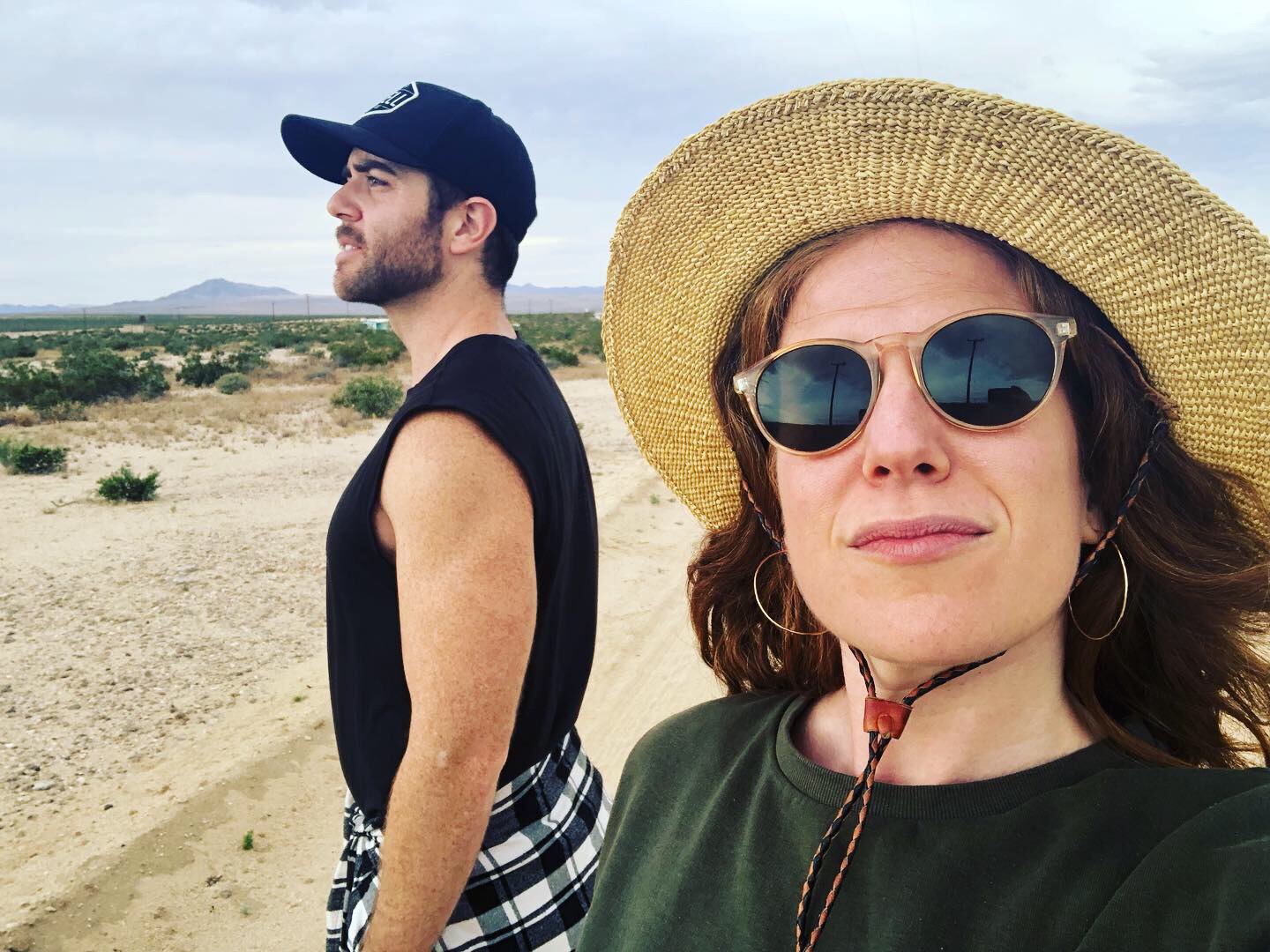

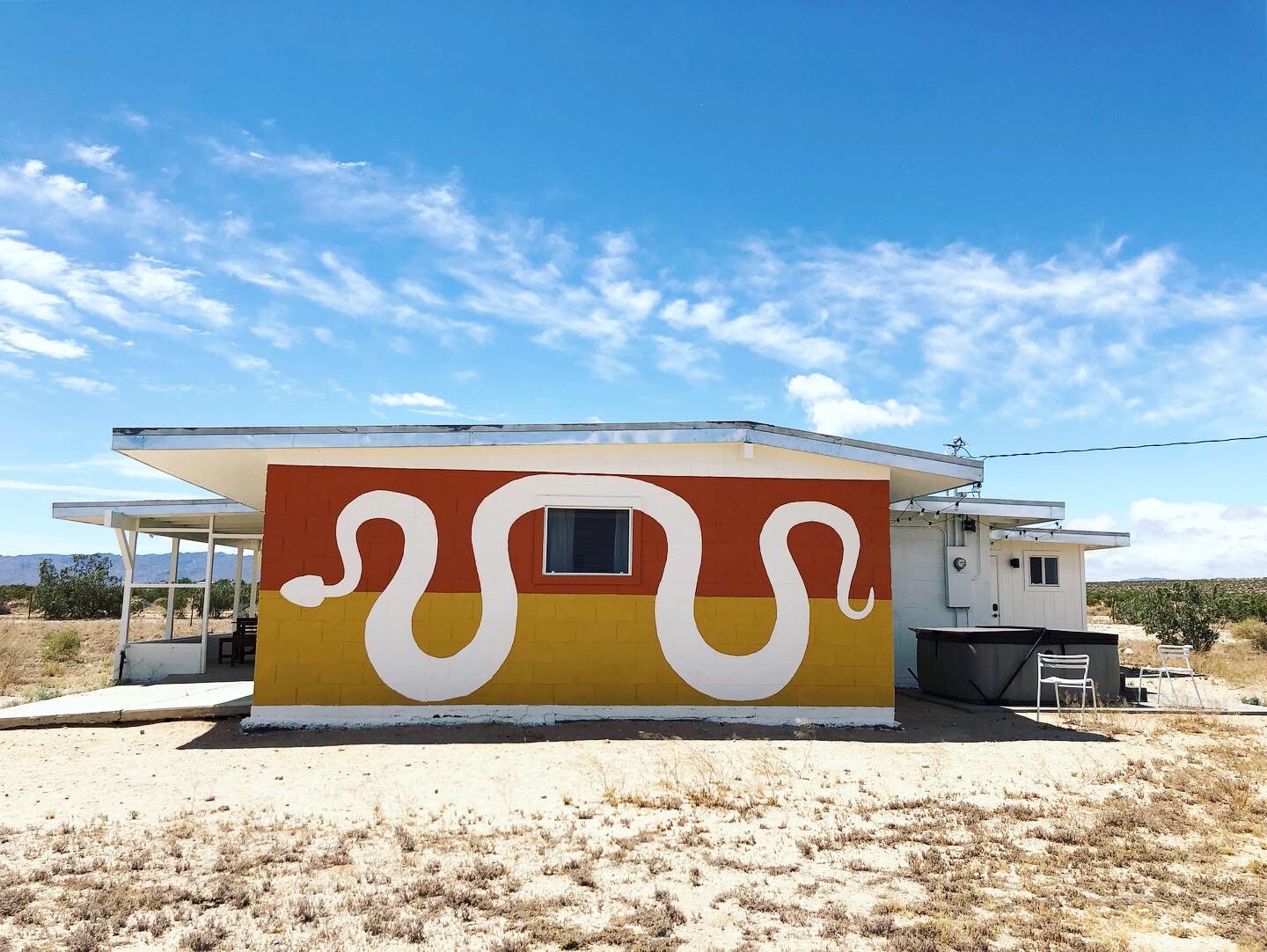
In late 2018, Lindsay and her business partner James Burial (also a deft furniture designer and builder) set their sights on renovating a 1958 Twentynine Palms homestead in just six months—with extraordinary results. I sat down with Lindsay to talk about artistic identity, career changes, money, the privileges and challenges of buying and renovating a home, and the creative drive.
Lindsay’s transparency and artistic force are inspiration for creatives of all kinds, and a retreat to That Desert House left me more ready than ever to accomplish the goals most important to me—and make the world more beautiful while I’m at it.
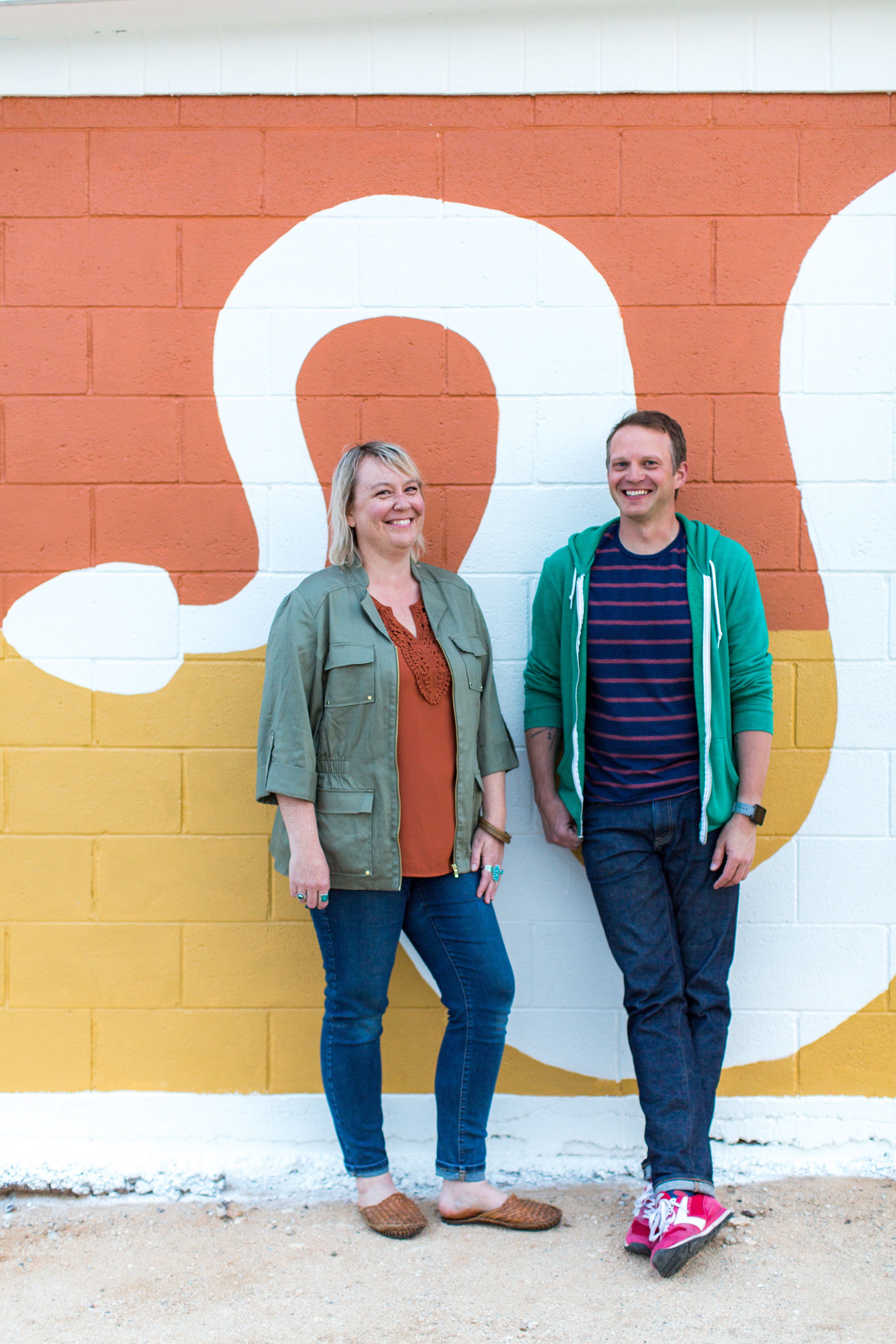
Lily Diamond: How do you describe yourself, when people ask what you do?
Lindsay Hollinger: I’m an artist. If people are curious after I make that declaration, then I go into detail.
As a creative entrepreneur, my work is varied and “artist” means many things. My primary work and income is from freelance illustration and design for a stationery company. I also do creative consulting, interiors, and my deepest joy is being a painter.
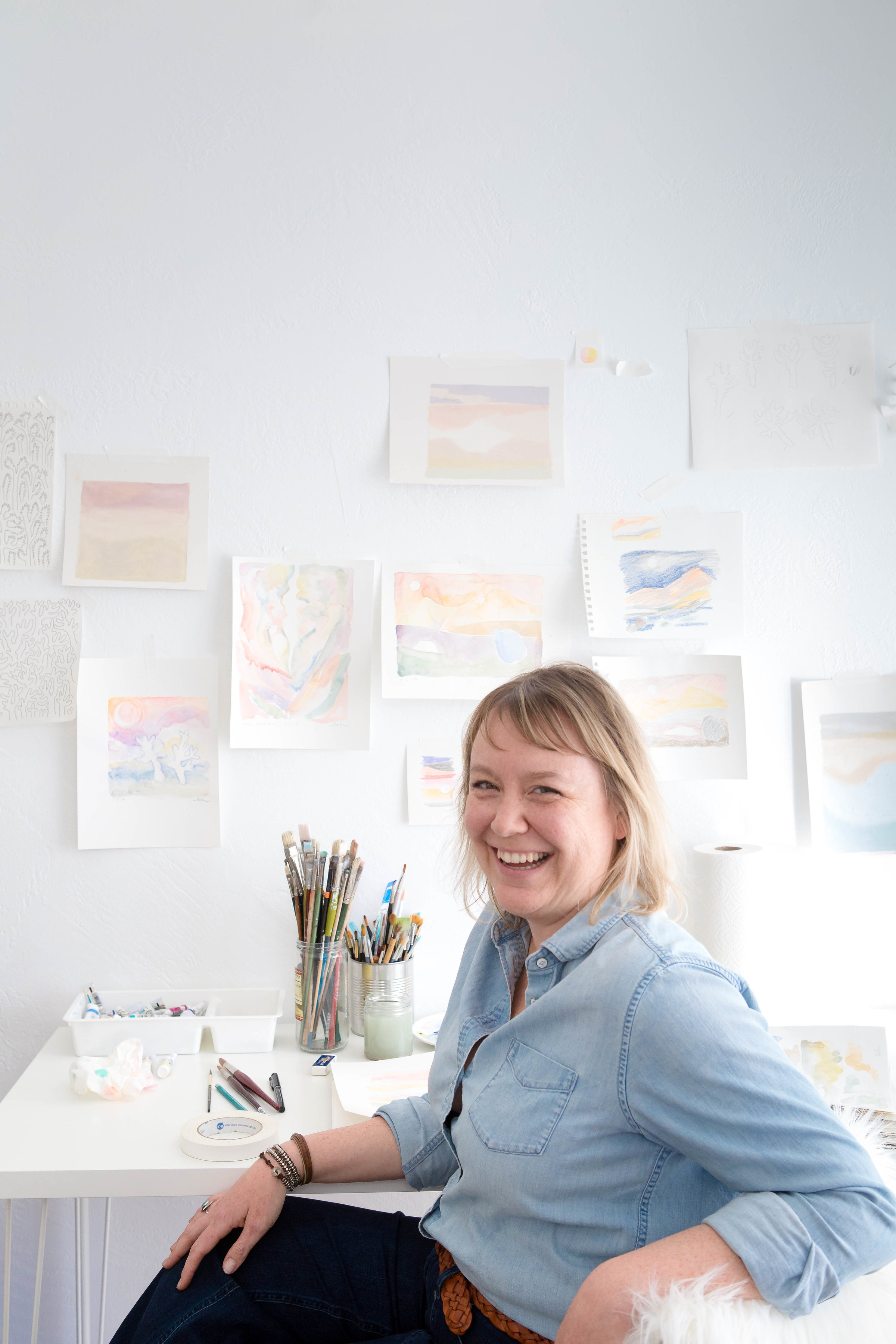
photo by Jess Isaacs
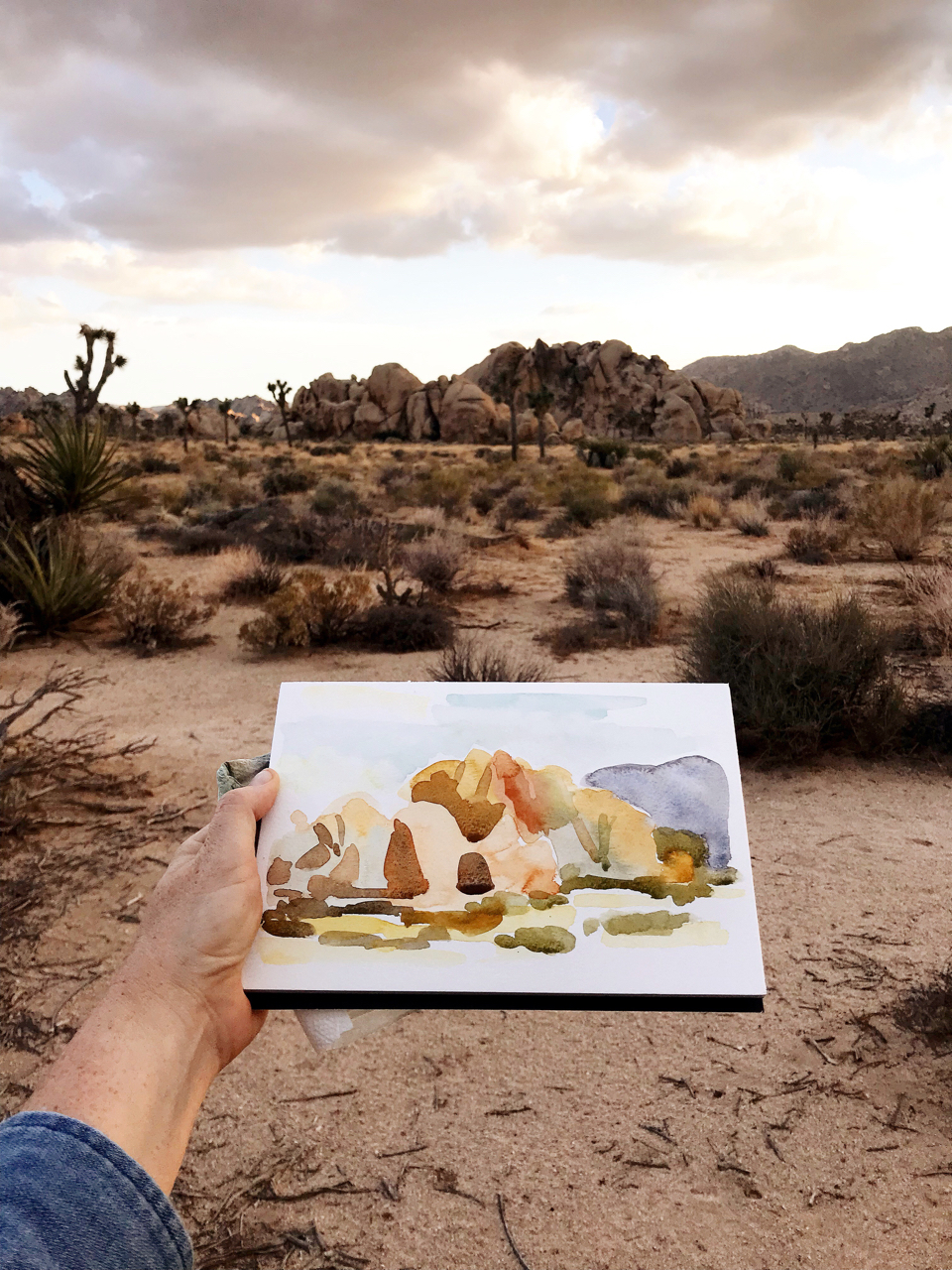
When did the idea of renovating and designing a house in the desert first occur to you, and why? Did it seem like a great idea, a scary idea?
I went through a career change in 2014. After leaving my job, I decided to travel for a while working freelance. To fund my travels and supplement my income, I illegally rented my Venice apartment on Airbnb (home sharing was still very new at the time). My eyes were opened to the power of the sharing economy because I saw firsthand how lucrative short-term rentals could be. It was an exciting time. Of course, it all came crashing down when I was evicted for the afore-mentioned illegal short-term rental. Short term rentals are a complex topic with many stakeholders and positives/negatives (that’s a whole other interview!) and I am a posterchild for the best and the worst. I had a great property manager who helped pack my entire LA apartment, do the final walkthrough, and move me into a storage unit while I was still in Europe. We had a great run.
The experience changed my mindset about real estate and passive income. It seemed clear that real estate was going to be the sustainable way to plan for the future and build financial freedom. I returned to Los Angeles and tried to figure out how to live on a freelancer’s budget and buy a house. But, alas, neither one of those things could happen in LA despite my best effort, so I looked elsewhere. I visited Joshua Tree on my road trip back to LA and I loved it. It was an affordable place to live, stunningly beautiful, close to LA, and had a creative vibe and it felt like creative people were gathering here. It felt right in my gut, so I rented an apartment for a few months to see if I liked it. I weathered my first summer (rather, sweated), learned about the desert, and house hunted. All signs pointed to “yes! Buy a house!”, so I took a dive. It was very scary, it was very exciting, it was all the things.
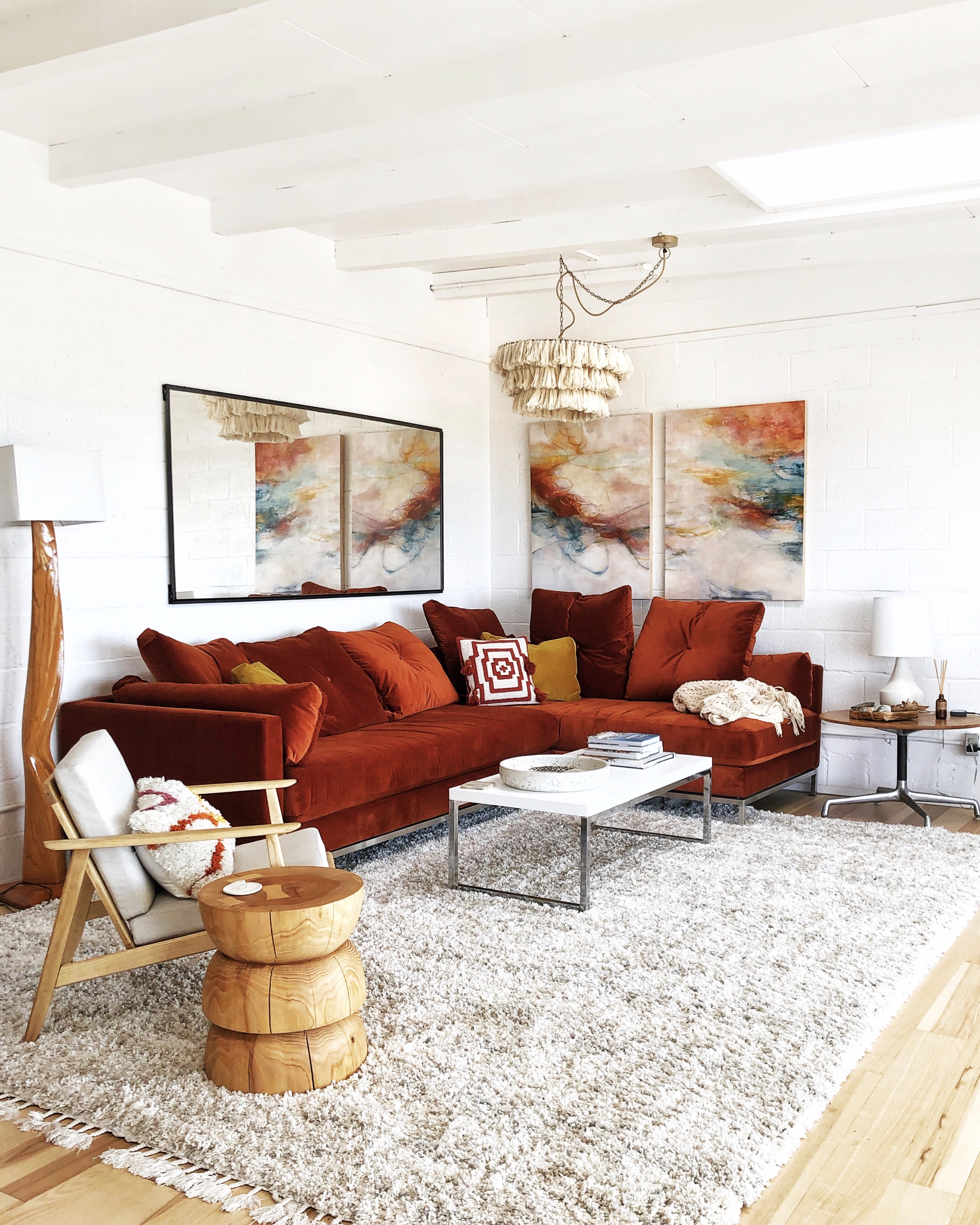

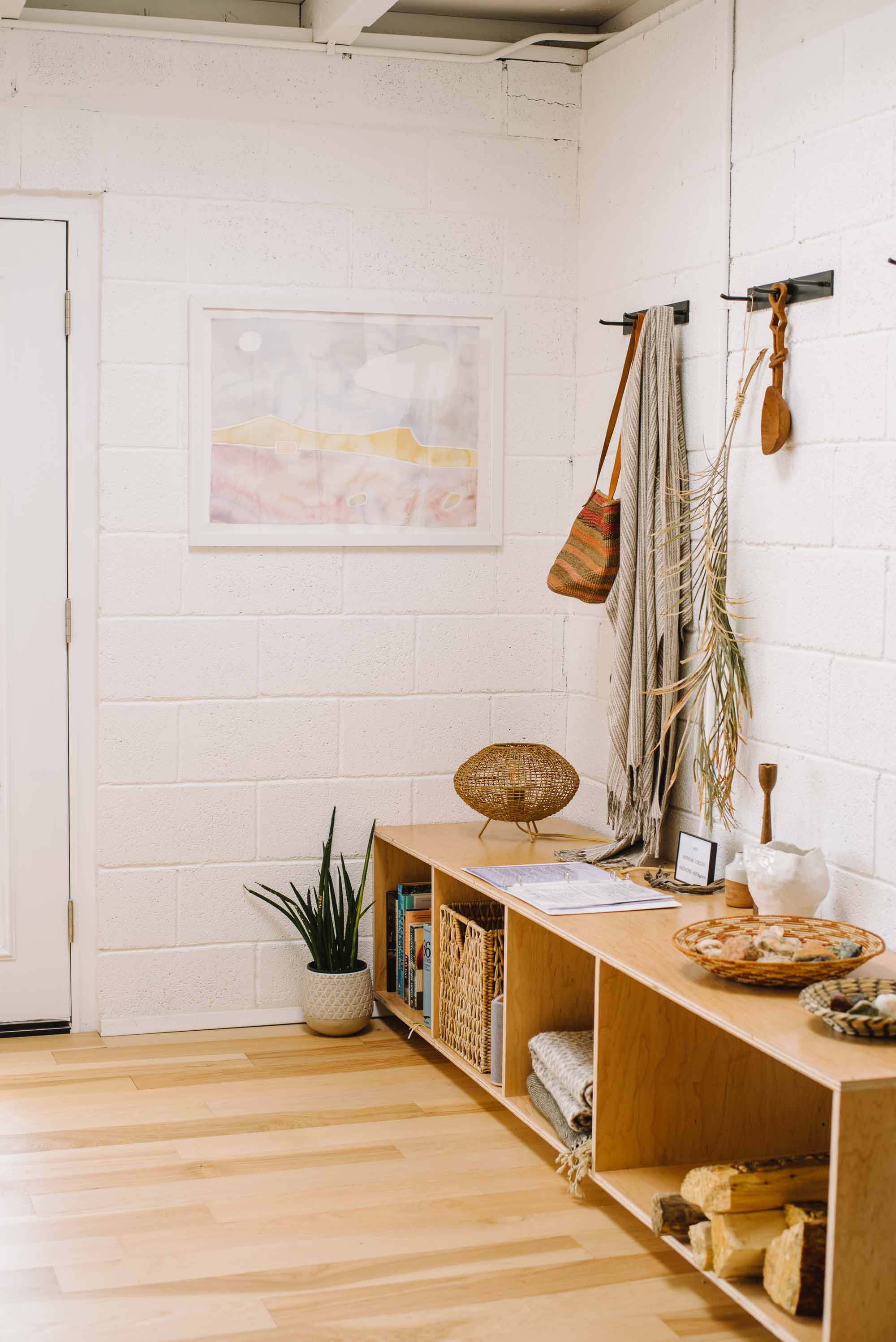
How did you have the money to buy and renovate the house that became Casa Joshua Tree? Was that a significant investment for you? What was the risk involved?
I was able to purchase my first home (Casa Joshua Tree) with the help of my family and with my own savings. My parents helped me with the down payment, and my father was a co-signer on my mortgage. I could not qualify for a loan on my own because I was newly freelance, and had a single income (versus married couples who qualify based on combined incomes). My parents stepped up and were able to support me with their down payment gift and their financial status in the eyes of the bank. It was a very big investment for me, even with their support. I paid for half of the down payment and the renovation costs.
This is an incredible privilege. Having a supportive family with the financial means to help me is the way that I was able to buy my house. I am so grateful to my parents (and grandparents, and great grandparents) who made the investment possible. Much, much gratitude.
The risks lay in whether or not I would continue to be employed to pay my mortgage (freelance life!) and whether I would be happy living in the desert. I set up my home from the beginning so that it would be easy to Airbnb, and banked on the rising popularity of Joshua Tree National Park and hoped people might want to rent my house if I needed extra income or while I traveled.
When you renovated Casa Joshua Tree, did you have any previous experience with owning property or renovating?
I did not have any experience in renovating or owning property. It was a big learning curve. I lived in New York and Los Angeles before moving to the desert, so never imagined I could afford to own property.
YouTube, plus asking lots of questions of my parents, friends, and community was the only thing that got me through.

Did you decide to do all renovations yourself because of budgetary constraints?
Yes! Home renovation is expensive, and such a grind (emotionally, physically, monetarily). A thousand little trips to Home Depot turns into $20k very quickly. Now that I’ve done two homes, I have a slightly better idea of cost. We were doing things on a shoestring and planned as best we could, but we went way over our meager budget. Looking at the big picture is hard, when you want to get just get it done as quickly as possible. James’ expertise and skills were priceless. I handled all the managing, books, budgets, purchasing, and then would go to the house to help him.
We used a professional electrician, plumber, and roofer. James did almost everything else, and he had knowledge to know what the pros were doing (and that we weren’t getting ripped off). We did our own demolition, flooring, tiling, cabinet installation, painting, light fixture installation, built the deck, and a thousand other small things. I say “we” but it was James with some help from me. It was really exhausting.
And what changed between Casa Joshua Tree and #ThatDesertHouse? How are the two properties distinct in your mind, and as separate creative endeavors?
For Casa Joshua Tree, I was designing for myself. I had furniture from my previous apartments. The house has more space than my city-dwelling brain had ever imagined I’d have. It’s only 1200 sq. ft. but I had been living in a 700 sq. ft. apartment so it felt massive. There was space mentally and physically. I knew I wanted to Airbnb the house if I needed to for extra income, but also spend lots of time there, so the needs of a rental were in the back of my mind (but not the most important consideration). I was adding things to my home as I could afford them, and choosing to arrange my space the way I thought it was most beautiful. I wanted things to feel light, peaceful, and reflect the desert landscape.
#ThatDesertHouse was a collaboration from the start. James and I are co-owners, and we worked out the division of labor and all the nitty gritty in our contract before we started house hunting. He was in charge of renovation and construction, I handled design and project management. I was designing based on what I love, but differently because it was designed mostly with guests’ enjoyment in mind, and James’s input was in the mix too. It was a strenuous, deeply involved, and financially straining project, all done in a very short time frame. TDH needed loads more work than CJT. It was also the first time I was working on a space in collaboration with companies—the popularity of my Instagram allowed me to work with some incredible businesses for sponsored product in the house. It was so exciting and also so stressful.
Both homes have the spirit of the desert—bringing in natural materials, light, beautiful art, and earthy colors. But they came to life in completely different ways!
Now, after all the renovations are done, I look at TDH as a space of pure relaxation and peace. It is remote, beautiful, and comfortable—a place to let your mind wander. Casa Joshua Tree has similar vibes but it’s in town, close to the park, and more of a social place to connect.
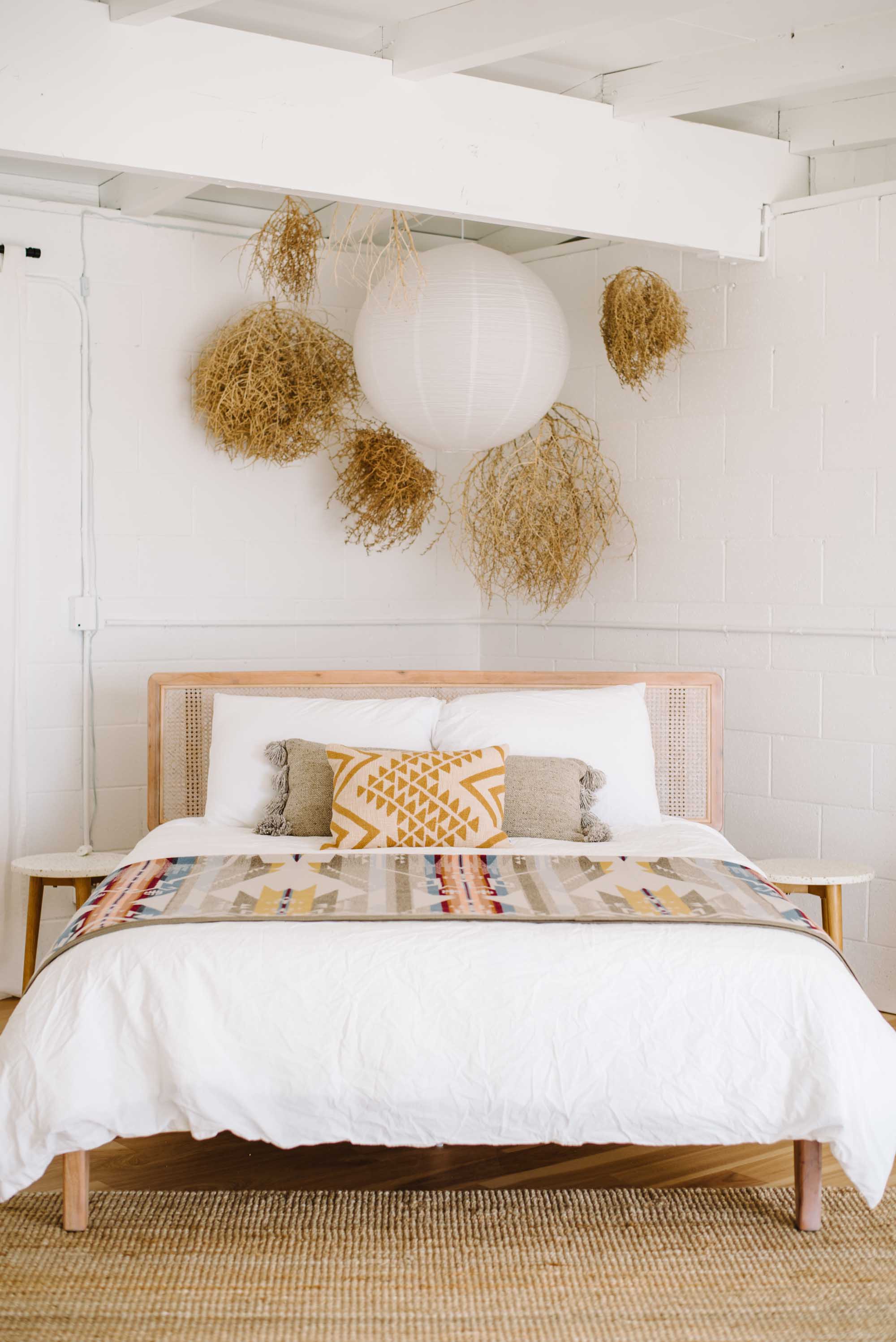

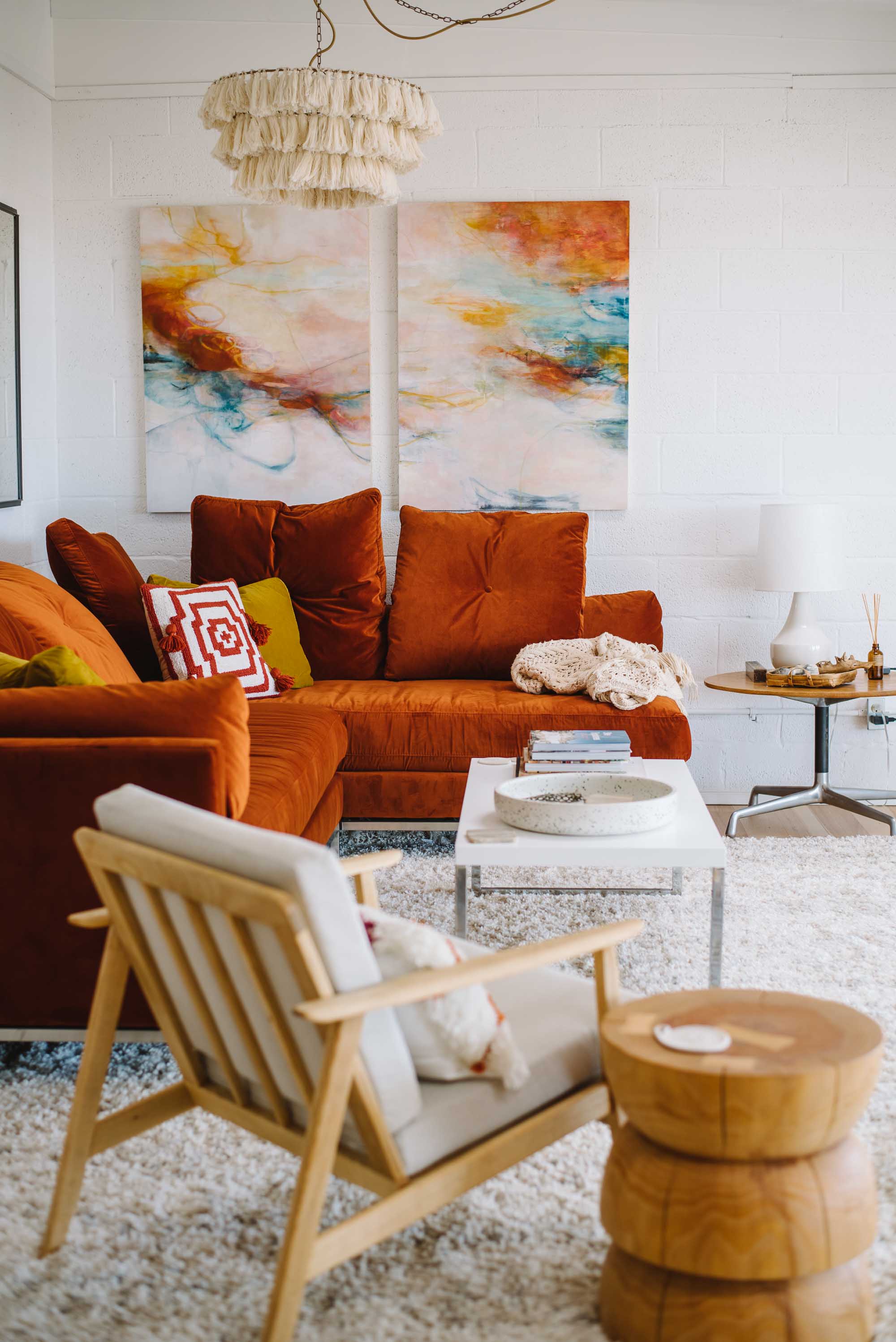
Your design style is so effortlessly California desert bohemian, with just enough mid-century modern in the mix to keep things clean. How did you cultivate your own style, and how did you go about translating that into the space of these homes?
Thank you! My taste has changed a lot over the years, and I love that it continues to change. I am currently enamored with Santa Fe and my color obsession is shifting from the pinks and lavenders of the Mojave to the red and blues of New Mexico.
I decorate with colors and pieces that inspire me, speak to me, things that I love. I am drawn to good design of any style and am always looking and noticing details, pulling inspiration from everywhere. I think my cultivation of style comes from a constant, insatiable need to be inspired visually, and then transforming that inspiration into my own thing.
The problem is, I love a lot of stuff. For both homes, I spent time early on establishing a guiding color palette and a set of “rules” for myself to guide the project. That really helped keep things simple and makes it easier to edit. I might love a furniture piece but if it doesn’t fit the vision, it doesn’t go in the house. James loves mid-century design and some of his collection and his pieces are in the house, which was a nice way to blend our styles.
In the end, I am most fascinated with how people feel in my homes—so the style of a space is guided by that goal as well as visual considerations.
What’s the larger vision for these two homes? Do you think about renovating more? A whole retreat center, perhaps? And how do these homes fit into the larger vision of your life as an artist and a human?
My larger vision is to separate my creativity from my income. Owning property and short-term rentals has allowed me to get closer to my goal by having a source of passive income. Although, in reality it’s hardly passive but a lot of work. I would like to have my creative pursuits purely for pleasure, for myself and my own needs, and not to make money. I’ve worked in commercial art for 16 years and it has been wonderful (and difficult) but I’m ready to make art just for me! I look at my mortgage payments as an investment in my future. In the long run, owning these homes is steering me towards being able to create on my own terms and having financial support.
Yes, I do think about renovating more. I would love to own and design more properties—the long-term goal of owning homes in other places I love. I plan to reinvest what I can towards this goal.
It’s going to take a while for my bank accounts to recover, and for me to forget what a grind home renovation is before I’m ready to go down that road again. I’m also flirting with the idea of interior design for other people—I’ve dipped my toes in but have yet to find a good fit. I’m open to the right project with the right partner!
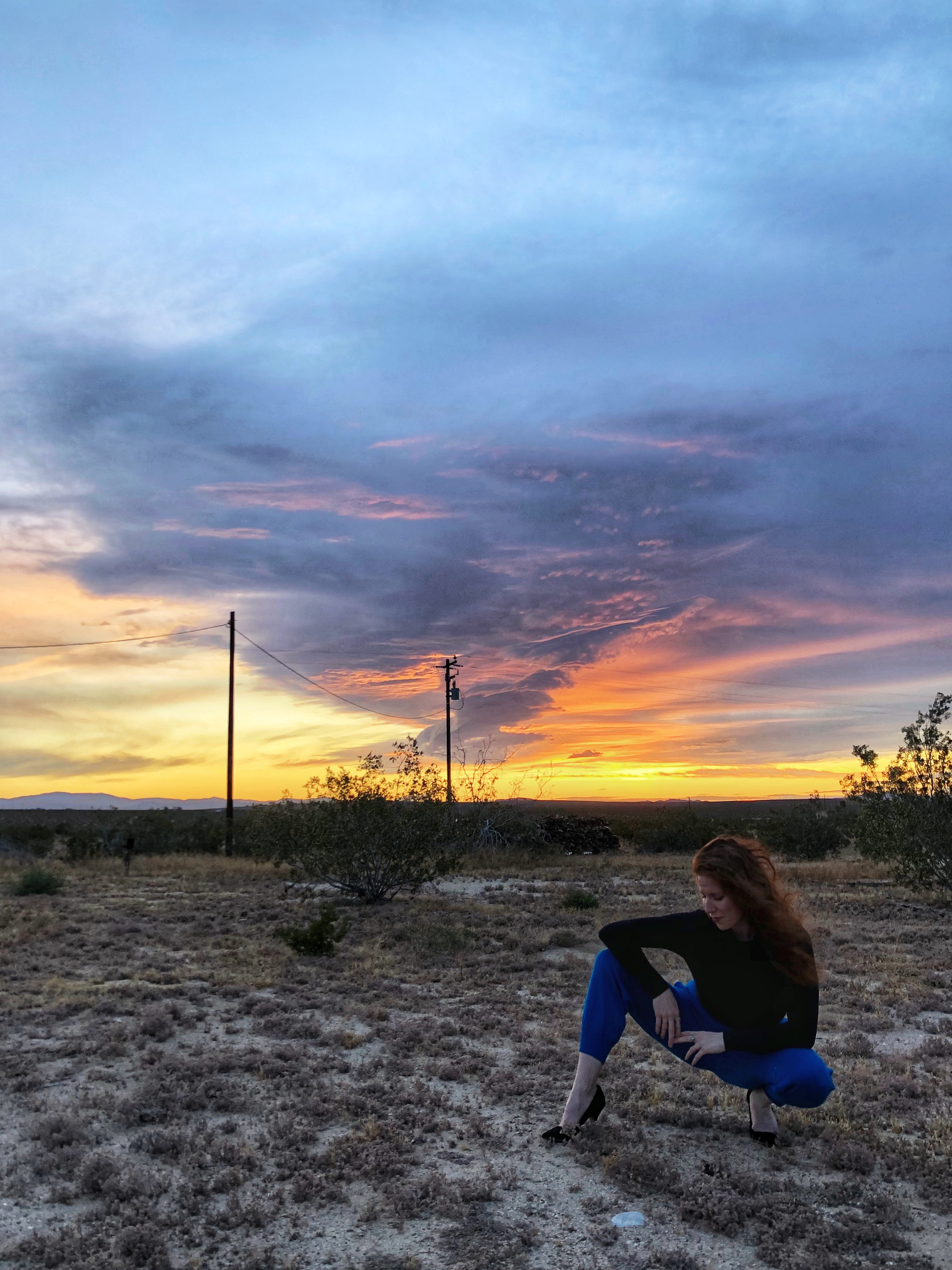
When did you know you were an artist, and when did you first say so out loud to the world?
Always. I was very lucky to grow up in a family that encouraged creativity. My mother was an illustrator and designer too—art supplies were always around and we would do projects together. My parents encouraged me all the way, and I’m so grateful for them.
Why is artistic creation important to you? Where and when do you feel most artistically alive?
I get very wound up and anxious if I’m not creating (in some form). I need projects to keep my mind from roller-coastering. I have high highs and low lows (I’m an ENFP if you’re into that kind of thing).
For a long time when I was working as an art director, I felt extremely burnt out and I wondered if my drive to make art would ever return. My mental energy was drained, and I was running on empty. I had to reassess my priorities. Eventually, after getting out of that situation and giving myself time to heal, my creative drive came back, which was a welcome relief. Now that my day job doesn’t take up my entire life, I have more space for ideas and creativity and learning. I’ve always got to be working on something.
I don’t know why it’s important to me exactly—it’s like breathing, so I have to do it? That’s a woo-woo answer but I have trouble coming up with a crisp, concise answer, you know? It’s the forward motion, the excitement, the frustration. Artistic creation is the joy of being human.
I feel most artistically alive when I’m out painting en plein air. I’ve got my little easel and kit and I’m sitting somewhere beautiful, working really hard to capture the feeling of where I am. Time and everything else just melts away. For the rest of my life, when I look at those little paintings, I feel exactly what it was like to be there at that moment. It is my most favorite thing.
Book your stay at That Desert House, starting at just $112/night.


